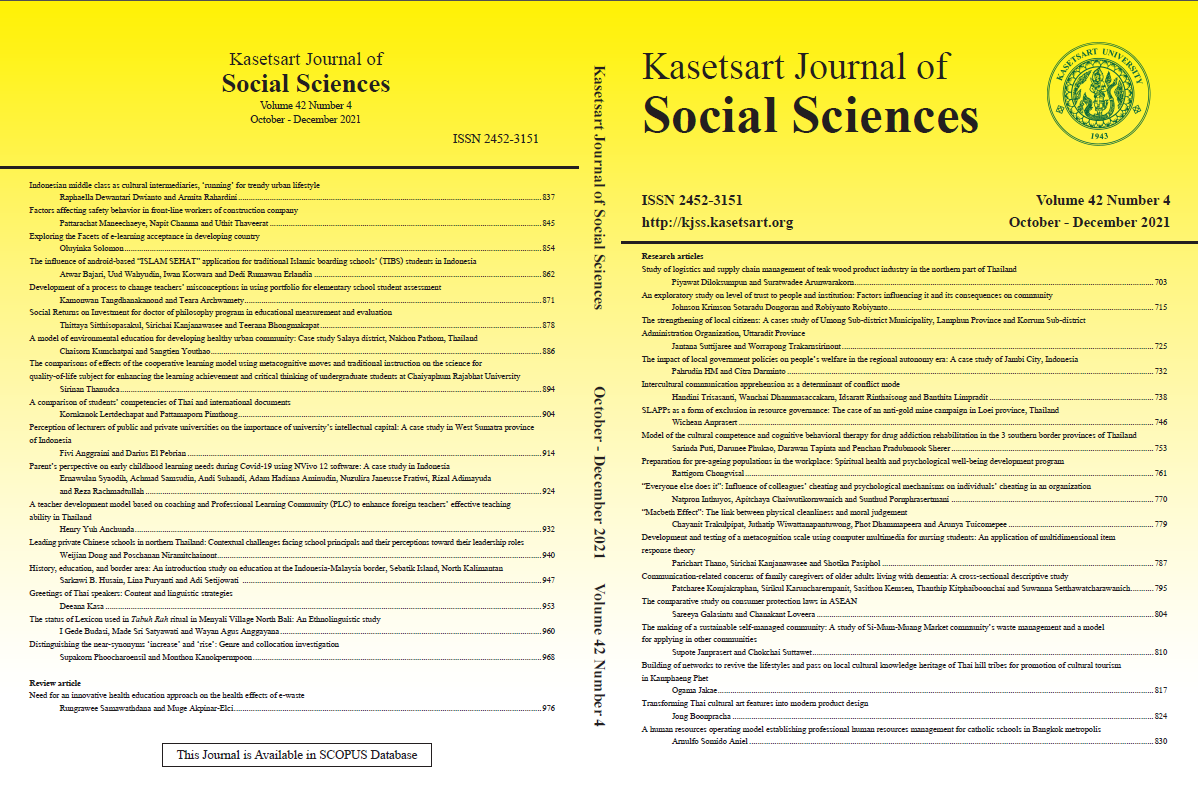A model of environmental education for developing healthy urban community: Case study Salaya district, Nakhon Pathom, Thailand
Keywords:
environmental education, environmental education model, healthy urban community, healthy urban community model, urban community development, urban community by environmental educationAbstract
Environmental Education (EE) is a powerful educational tool necessary for a sustainable environment because it can change the attitude and behavior of humans toward supporting ecological integrity of a healthy city. This study was undertaken to find out how EE can assist in creating a healthy urban community (HUC). The study used Methodological triangulation: (1) Quantitative research approach by questionnaires about dimensions of EE and dimensions of HUC from 403 samples. It was found people realized that EE is environmental consciousness and HUC is quality of life, and that both have a positive relationship; (2) Qualitative research approach by 10 Salaya community leaders’ small focus group for opinion of leaders’ view. The result showed that regarding the environment, what people in a community were concerned about most was health followed by the effect on the scenery.; and (3) Action research approach from 30 samples by first, educating using the monitor and whiteboard. Second, giving the samples the questionnaires of the opinions. It was found that the difference was significant at 0.01 in attitude and knowledge. The results of the study revealed that with “A model of environmental education for developing healthy urban community”, EE and HUC were correlated. In conclusion, people would be interested to learn EE for sustainable environmental HUC when they were: (1) aware of “environmental pollution in their own living area”; (2) concerned about their “health and quality of life in relation to the environment where they lived”; and (3) curious to learn “the understandable academic environmental knowledge”, which helped create good environment.
Downloads
Published
How to Cite
Issue
Section
License

This work is licensed under a Creative Commons Attribution-NonCommercial-NoDerivatives 4.0 International License.
This is an open access article under the CC BY-NC-ND license http://creativecommons.org/licenses/by-nc-nd/4.0/










